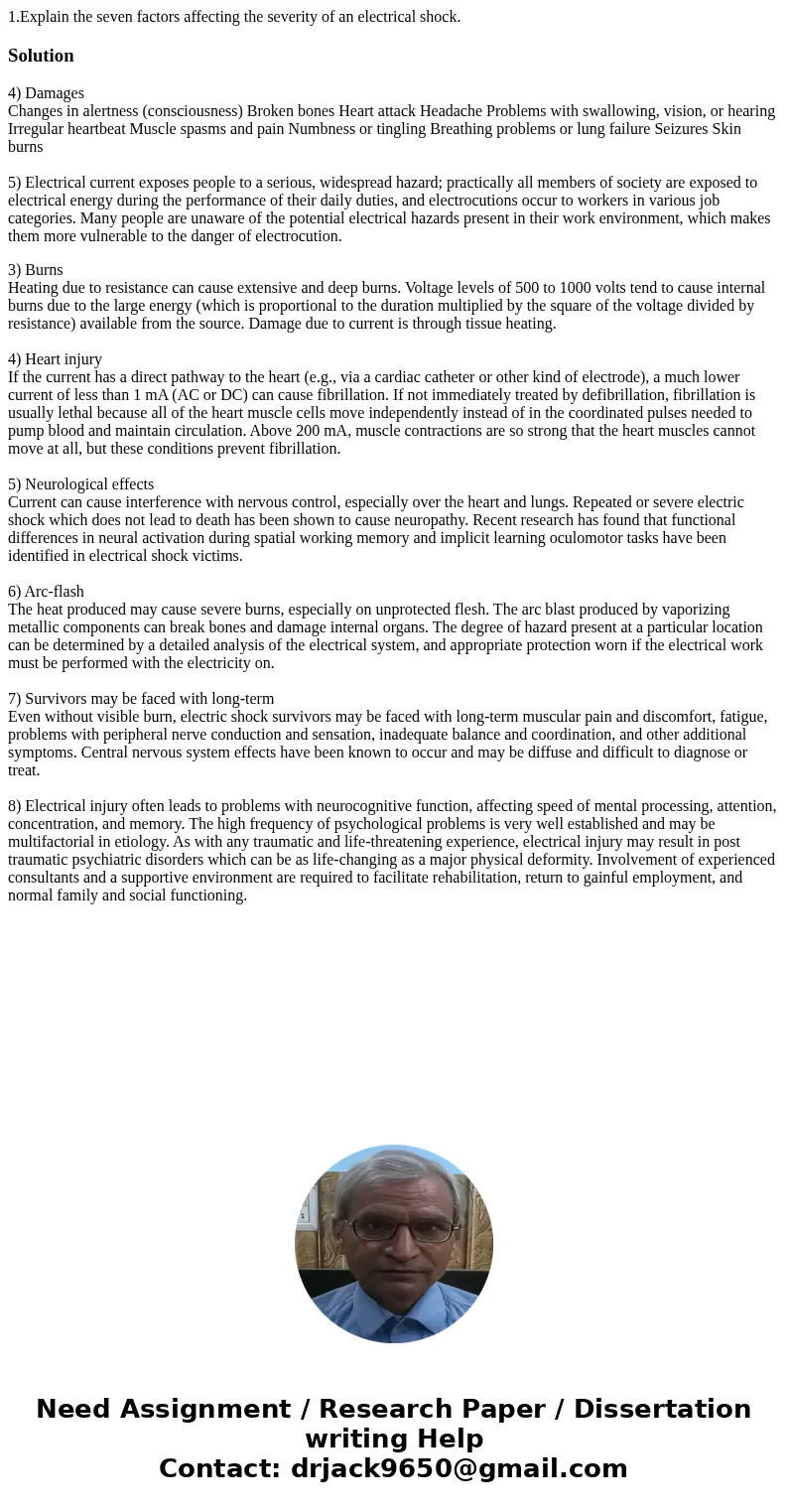1Explain the seven factors affecting the severity of an elec
1.Explain the seven factors affecting the severity of an electrical shock.
Solution
4) Damages
Changes in alertness (consciousness) Broken bones Heart attack Headache Problems with swallowing, vision, or hearing Irregular heartbeat Muscle spasms and pain Numbness or tingling Breathing problems or lung failure Seizures Skin burns
5) Electrical current exposes people to a serious, widespread hazard; practically all members of society are exposed to electrical energy during the performance of their daily duties, and electrocutions occur to workers in various job categories. Many people are unaware of the potential electrical hazards present in their work environment, which makes them more vulnerable to the danger of electrocution.
3) Burns
Heating due to resistance can cause extensive and deep burns. Voltage levels of 500 to 1000 volts tend to cause internal burns due to the large energy (which is proportional to the duration multiplied by the square of the voltage divided by resistance) available from the source. Damage due to current is through tissue heating.
4) Heart injury
If the current has a direct pathway to the heart (e.g., via a cardiac catheter or other kind of electrode), a much lower current of less than 1 mA (AC or DC) can cause fibrillation. If not immediately treated by defibrillation, fibrillation is usually lethal because all of the heart muscle cells move independently instead of in the coordinated pulses needed to pump blood and maintain circulation. Above 200 mA, muscle contractions are so strong that the heart muscles cannot move at all, but these conditions prevent fibrillation.
5) Neurological effects
Current can cause interference with nervous control, especially over the heart and lungs. Repeated or severe electric shock which does not lead to death has been shown to cause neuropathy. Recent research has found that functional differences in neural activation during spatial working memory and implicit learning oculomotor tasks have been identified in electrical shock victims.
6) Arc-flash
The heat produced may cause severe burns, especially on unprotected flesh. The arc blast produced by vaporizing metallic components can break bones and damage internal organs. The degree of hazard present at a particular location can be determined by a detailed analysis of the electrical system, and appropriate protection worn if the electrical work must be performed with the electricity on.
7) Survivors may be faced with long-term
Even without visible burn, electric shock survivors may be faced with long-term muscular pain and discomfort, fatigue, problems with peripheral nerve conduction and sensation, inadequate balance and coordination, and other additional symptoms. Central nervous system effects have been known to occur and may be diffuse and difficult to diagnose or treat.
8) Electrical injury often leads to problems with neurocognitive function, affecting speed of mental processing, attention, concentration, and memory. The high frequency of psychological problems is very well established and may be multifactorial in etiology. As with any traumatic and life-threatening experience, electrical injury may result in post traumatic psychiatric disorders which can be as life-changing as a major physical deformity. Involvement of experienced consultants and a supportive environment are required to facilitate rehabilitation, return to gainful employment, and normal family and social functioning.

 Homework Sourse
Homework Sourse